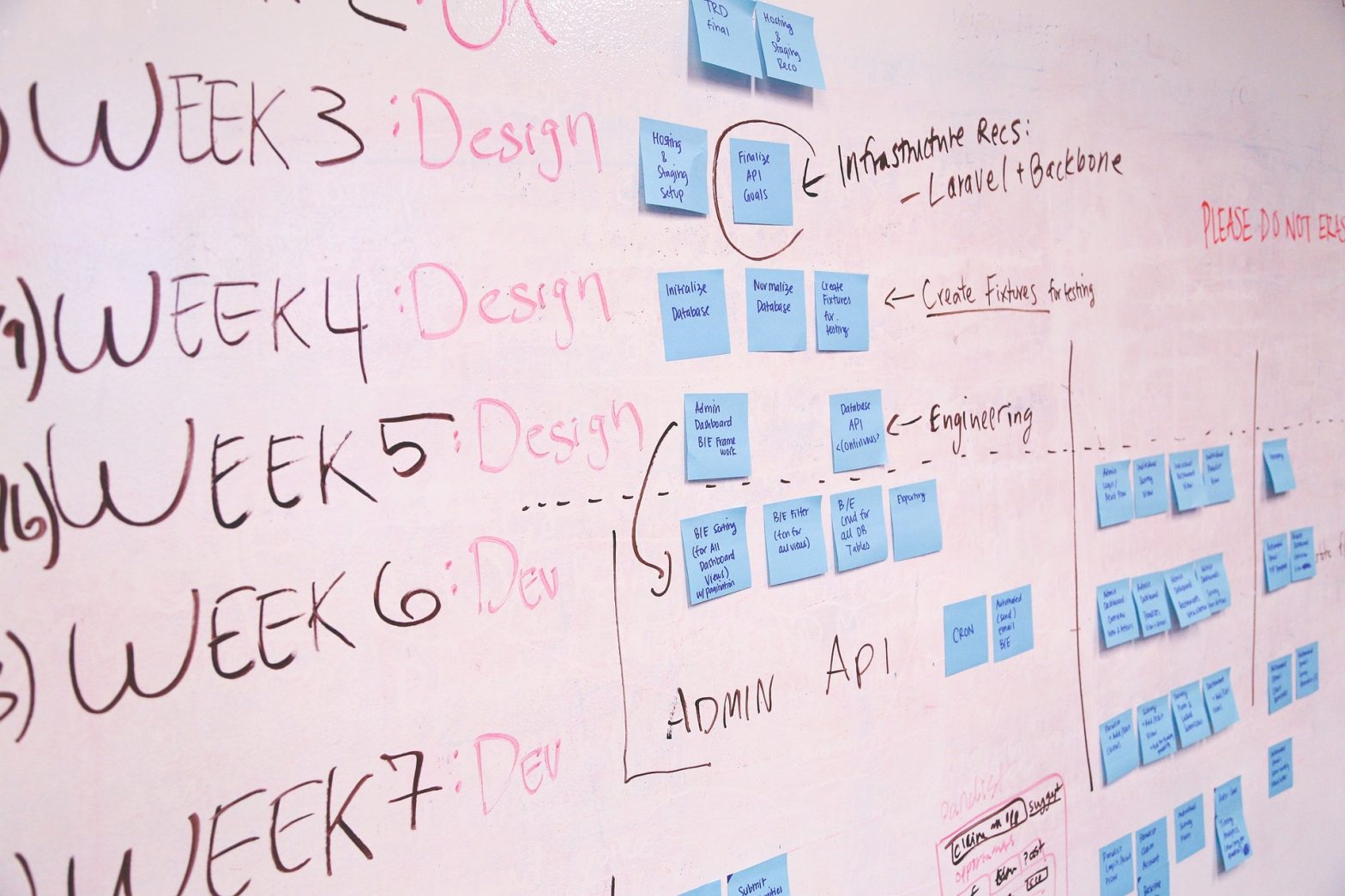Perhaps the most obvious way to break up your projects into a workflow, traditional project management is often referred to as “waterfall” project management because it handles one thing after another in a linear order. Think of it like your favorite mobile game, such as Candy Crush: you can’t unlock the next level until you’ve beat the one you’re in (and hopefully, your project is just as fun if not frustratingly addictive).
Traditional Project Management, or TPM as it’s abbreviated, stresses on-time delivery within a stringent budget. It’s best for projects where tasks need to be completed one after another—or where you want to emphasize planning and design before you start building the actual project.
Structure
You could make your own “traditional” project management system by breaking any project down into steps that must be completed one after another, but standard TPM has six specific stages: initiation, planning and design, execution, testing, monitoring and completion.
- Initiation phase: The project manager and team determine the product requirements. Otherwise known as as “requirements determination”, it’s a fancy way of saying everyone participates in a brain dump, listing everything that needs to happen to get to the finish line.
- Planning and design phase: This step can be broken into two categories: basic design and detailed design. During this phase, the team makes sure the proposed design meets the product requirements. For software design teams, for example, this is the point where they choose their coding language and decide how they want to structure the user experience.
- Execution (or Implementation) and Testing phase: These are the steps where the ball really gets rolling—construction and integration all happen in this chapter. Following the detailed design, the team builds the product, measuring its development against specific metrics established in previous phases. Each part of the execution has its own steps, which move the project to the next half-phase: testing. Just as important as the design phase, testing is where you discover and fix any glitches, whether it’s bugs in the software or poorly placed wiring in a construction project. After testing, anything that still needs work gets shifted back to the execution phase—round and round you’ll go, until the project is finished.
- Monitoring and completion (or Management and Maintenance) phase: This phase is the long tail of your project, the work that never quite ends. You’re dedicated to keeping customers and users happy with your product by discovering ways to improve it, while simultaneously maintaining and providing support for the product.
Dig deeper into traditional project management styles, and you’ll find a few variations on these phases. Not all projects need every stage of the traditional waterfall model—some may need only three, while others need an “iterative waterfall” where work is divided into sprints rather than blocks of start-to-finish subprojects. Either way, the idea is the same: your project is broken into phases, and one must be completed before the other.
Since TPM is such a time-driven approach, common scheduling tools work great for traditional project management. You can list phases in a to-do list app, or block out time on a calendar. The best TPM tool, though, is the trusty Gantt chart which helps visualize each phase of your project and the time it’ll take. You could make one in a spreadsheet like Smartsheet or use traditional project management tools like Microsoft Project to build them.
Traditional Project Management Strengths
True traditional project management is perhaps an old school model, but its strengths have allowed it to keep hold. It requires upper management to clearly define what it is they want, giving the project focus and consistency early on. The emphasis on customer review and testing is meant to catch (and attack) problems early, causing a small headache now so that teams can avoid a horrid migraine later. It ensures the project will be well planned and tested thoroughly before delivery—something crucial for many real-world projects.
TPM can potentially cut down on stress and missed deadlines because each phase allows enough time for full completion and worst-case scenarios, meaning a disaster-free project can be delivered before deadline. With everything planned out, you’ll know the exact resources and time needed for the project—even if they may be over-estimated in rigidly-set estimates.
Traditional Project Management Weaknesses
TPM’s rigidity is also its greatest downfall. It’s like an old, dry tree: it’s rigid, and doesn’t do well with change. Toyota, where Lean and Kanban project management were pioneered in their manufacturing departments, is even criticized for using TPM in their software development since it makes them less flexible to changes.
It’s perfect for places like the construction industry, where project scope and direction remains relatively unchanged throughout the project. But if time and resources aren’t your main constraint, or you need more flexibility to change your project as it’s under development, you might find that another project management method is better for you.
